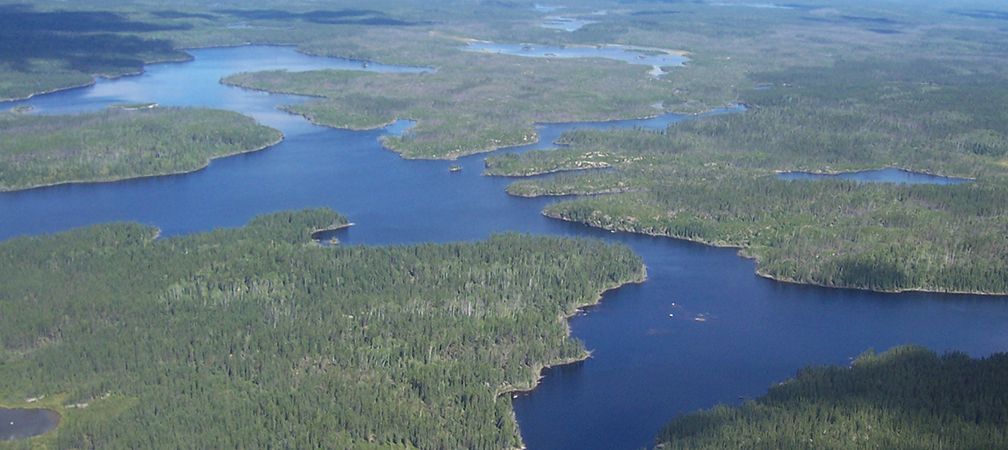Ontario Nature Blog
Receive email alerts about breaking conservation
and environmental news.
© Lora Denis
December 9, 2021–Graeme Smith
Boreal Forest•Climate Change•Habitat•Land-use planning•Wild Species
Clearcut © Ontario Nature
On the heels of the recent 2021 United Nations Climate Change Conference (COP26) and Canada’s commitments to natural climate solutions and ending deforestation, it is imperative to take a critical look at Canada’s current emissions and the ways in which they’re counted.
A new report by Natural Resources Defense Council (NRDC), Nature Canada, Environmental Defence and Nature Québec, has been released detailing the ways in which Canada is failing to accurately report emissions from the logging industry. As detailed in “Missing the Forest: How Carbon Loopholes for Logging Hinder Canada’s Climate Leadership”, Canada submits its greenhouse gas emissions to the United Nations Framework Convention on Climate Change, but is leaving out over 80 million tons of carbon emissions (roughly equivalent to the same amount of emissions released by all buildings in Canada). These omissions jeopardize our ability to reach a net-zero carbon future.

Ontario Nature’s Protected Places team interviewed Dr. Michael Polanyi, the Policy and Campaign Manager for Nature-based Climate Solutions at Nature Canada and one of the report co-authors, to discuss the problems with Canada’s current approach to accounting for carbon and the path forward.
Q. What is the main issue with Canada’s carbon accounting process?
Dr. Polanyi: The federal government is using flawed and biased methods for measuring and reporting the CO2 emissions associated with the logging of intact forests. As a result, it is understating logging emissions by more than 80 million tons a year. That’s the equivalent of failing to report all the emissions from heating and cooling buildings in Canada. By underreporting logging sector emissions, Canada is undervaluing the importance of forest protection, and perpetuating the myth that clear-cutting intact forests is somehow environmentally benign. Accurately report logging emissions is a key first step to putting in place policies to protect critical primary and old-growth forests.

Q. How are wildfires accounted for in the carbon accounting process?
Dr. Polanyi: Fires are a natural part of the forest cycle. We’re concerned about the additionality of clear-cut logging on top of fires, which is reducing the average age of trees in these forests and making them into a net source of emissions. Canada is not reporting emissions to the UN related to wildfires [countries are only required to report emissions that are human-caused], but they’re taking credit for carbon that’s sequestered by trees that are regrowing after those fires.
Q. How are primary forests (intact forests which are largely undisturbed by industrial development) crucial to fighting climate change?
Dr. Polanyi: Our primary forests in Canada are critical in terms of being a carbon sink and sequestering carbon out of the atmosphere, and they hold an immense amount of carbon. 110 billion tons of carbon are stored, about the total carbon budget that the world has left to burn to keep global warming below 1.5°C. As we move away from burning and producing fossil fuels, it’s critical to make sure that primary forests are protected so that this stored carbon isn’t released into the atmosphere.

Q. What are the implications of a ‘business as usual’ approach?
Dr. Polanyi: Canada needs to accurately measure and report its CO2 emissions if it is to effectively reduce them. By falsely portraying logging as a low-emission sector, Canada is undervaluing the climate importance of intact forests – and failing to put in place policies to advance Indigenous-led efforts to protect forests. Moreover, it is failing to encourage the transition of the logging industry into a more sustainable, value-added, jobs-rich industry.
Q. What’s the next step in improving Canada’s carbon accounting?
Dr. Polanyi: We’re looking for leadership from the new Minister of Natural Resources and the new Minister of Environment and Climate Change to recognize the importance of measuring and accounting for carbon in the forest sector accurately. We’d like to see an independent audit or review to address the accounting flaws and omissions that we have identified. We also encourage the public to hold their politicians accountable in terms of better protecting intact forests which is so critical to addressing the dual crisis of climate change and species loss.
Ontario Nature is working with conservation groups, Indigenous organizations and communities, industry and provincial/federal government partners to explore the potential for protected areas as nature-based climate solutions. We recognize the urgent need for climate and biodiversity action. If you missed our latest webinar on our nature-based climate solutions work, you can find it here. You can learn more about the current state of forestry and wildlife issues in Ontario here.
This project was funded by the Career-Launcher Internships program with the financial support of the Government of Canada through the federal Department of Environment and Climate Change, and an Anonymous Donor.

Gananoque Lake Nature Reserve © Smera Sukumar